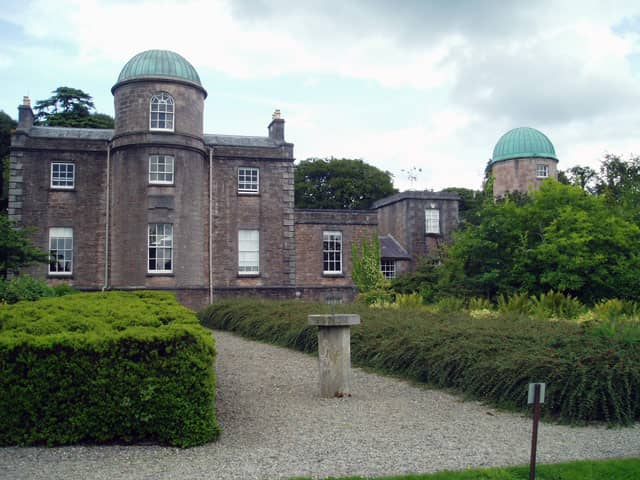
It was the warmest spring since records began – and it’s not looking too bad as we move into summer.
Armagh Observatory has reported that May 2017 was exceptionally warm, drier than average and much sunnier. This was the second warmest May on record at Armagh and the sunniest May for 82 years – since May 1935, that is!
Taking March, April and May together, this was also the warmest spring on record at Armagh, that is, since the Observatory’s daily temperature records began around 1795.
The mean temperature was 13.2 degrees Celsius, approximately 2.6 C warmer than the long-term (1796-2010) average May temperature at Armagh and 2.0 C warmer than the most recent (1981-2010) 30-year average. This was the second warmest May at Armagh since records began, shared with May 2008 and May 1848. The only warmer May at Armagh is May 1809, which had an average temperature of 13.8 C.
The warmest day (highest maximum air temperature) was 25.7 C, which occurred on 26th May, and the second warmest was 24.5 C on the 25th. These were the warmest days of the year so far. The warmest day (26th May 2017) was also the second warmest May day on record at Armagh, the warmest May day at Armagh since 23rd May 1989 (26.2 C).
The warmest nights (highest minimum air temperature) occurred on the 16th and 24th, both with a highest minimum air temperature of 14.0 C. These nights are now the third warmest May nights on record at Armagh, that is since daily maximum/minimum temperature records began at Armagh in 1843. The two warmer May nights at Armagh are the 29th May 1947 (minimum air temperature 15.2 C) and 24th May 1953 (14.1 C). The coolest night (lowest minimum air temperature) was the 10th (3.3 C).
Among the 13 nights during which the grass temperature fell below zero this month there was one quite sharp ground frost, namely that of 31st May. This had a minimum grass temperature of -5.7 C. There were no air frosts.
With two exceptions, most of May 2017 was very dry. There were 14 days with no measureable rainfall at all, and total precipitation was just 35.6 mm (1.40 inches) with no trace values. This is approximately 60% of the long-term (1838-2010) average May rainfall at Armagh, and the driest May at Armagh for nine years, that is, since May 2008. The wettest day was the 27th, with 8.3 mm precipitation (0.33 inches), followed by the 14th with 6.8 mm. Ice pellets, followed by small hail, were noted by the observer on the 18th.
May 2017 was also exceptionally sunny, with a total of 250.2 hours of strong sunshine. This is approximately 32% more than the long-term (1881-2010) average number of hours of strong May sunshine at Armagh, and 44% more than the most recent (1981-2010) 30-year May average. The five sunniest days were the 26th (14.6 hours), 7th (14.5 hours), 8th (14.4 hours) and the 4th and 25th (with 14.0 hours).
This was the sunniest May at Armagh for 82 years, that is, since May 1935 (251.6 hours), and the third sunniest since sunshine records began at Armagh in April 1880. The sunniest May on record at Armagh is May 1901, which had 254.1 hours of strong sunshine.
Taking the meteorological spring months March, April and May together, spring 2017 was drier than average, very warm and with about average sunshine.
The mean spring temperature was 10.2 C. This is approximately 2.1 C warmer than the long-term (1796-2010) spring temperature at Armagh and 1.4 C warmer than the most recent (1981-2010) 30-year average.
Spring 2017 was the warmest spring on record at Armagh, that is, since daily temperature records began at Armagh in December 1794. The three warmest springs at Armagh are now 2017 (10.2 C), and 2011 and 1945 (both 10.0 C).
Total spring precipitation was 116.0 mm, including 14 trace values. This is approximately 64% of the most recent (1981-2010) 30-year average spring precipitation at Armagh, and was the driest spring at Armagh for five years, that is, since spring 2012. Taking the consecutive seasons autumn, winter and spring together, this has been the driest such 9-month period for 83 years, that is, since autumn 1933 through spring 1934, and the fifth driest such period since rainfall srecords began in Armagh in 1838.
Total spring sunshine was 462.5 hours, which is nearly 12% more than the most recent (1981-2010) 30-year average spring sunshine at Armagh.



